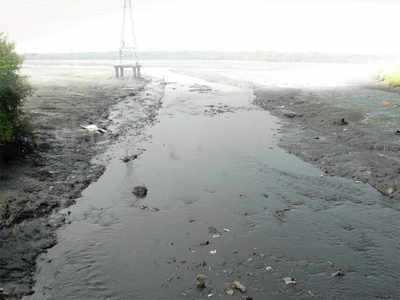Search here

04-Jun-2018 , Updated on 2/19/2024 6:47:31 AM
In-appropriate drainage system in our city…
As there are already too many issues with our city the seepage framework in the city is another major concern.
The waste condition in the city and its encompassing is very unacceptable, as water amasses in a few low lying regions like Allahapur, Mumfordganj, Rajapur, Beli Karelabage, close CAV Inter College, Gaus Nagar, Kareli and so forth. It isn't that these territories are immersed simply after an overwhelming deluge, but instead notwithstanding when the city gets insufficient precipitation, these regions are waterlogged.
The open seepage and sewerage framework is another enormous issue. The sewer benefit regions are separated into nine zones in the city, which incorporate principle benefit zones and every day skimming yet do exclude Khumb Mela populace. The sewer benefit territories of Allahabad city incorporate channels of Teliarganj, Rasulabad, Govindpur, Shivkuti, Phaphamau, Jhunsi and that of Sulem Sarai.
These effluents are released in the two waterways in the wake of being brought through a portion of the fundamental Nala of the city. Primary Ghaghar Nala conveys 42.44 percent of release being delivered in Allahabad city confine, while Allenganj Nala, Salori Nala/Baxi Bund Nala convey 27 percent. So also Chachar Nala releases 35 percent of the aggregate waste delivered, while Rajapur Nala obliges 7.62 percent, he said.

Despite the fact that alongside these major nalas, there are different nalas in the distinctive parts of the city, however by and large it has been distinguished that absence of occasional support and redesign of old sewerage framework is yet another issue. An endeavor has likewise been made to appraise amount of leachate in open seepage because of polythene collection, silt amassing in open waste and to evaluate ecological unfriendly effect in various season in various wards, Siddiqui included.
Different powerless zones have been recognized based on making cradle of 200 meters along the major nalas. Ghaghar Nala and Chachar Nala are the most helpless and other connected zones such as GTB Nagar, Kareli, Atala, Rasoolpur, Muthiganj and old parts of the city revealed most exceedingly awful condition as a contrast with different zones. The local waste and leachate delivered from these waste dumping in Nalas is heterogeneous and displays tremendous transient and occasional variety.
The issue of local waste, being released in Nala and after that to two noteworthy waterways is more troubling for the inhabitants of the Sangam city as since the beginning of civilization the general population of Indian have considered stream Ganga holy and adored her and its water is considered so unadulterated that individuals used to store it in enormous vessels yet no more. Different in intestinal contaminations, for example, typhoid, cholera, loose bowels and certain other malady like jaundice and so forth are related with residential water supply.
Allahabad city covers a region of 70.5 square kilometers, wherein there are 1, 33,851 number of family units (in the year 1991), which has expanded to roughly 2 lakh families.
The anticipated figure of a populace of the city, inside as far as possible, (as per the UP Jal Nigam, 2010) is 13, 36,900.

Other
I am a content writter !
Comments
Join Our Newsletter
Subscribe to our newsletter to receive emails about new views posts, releases and updates.
Copyright 2010 - 2025 MindStick Software Pvt. Ltd. All Rights Reserved Privacy Policy | Terms & Conditions | Cookie Policy